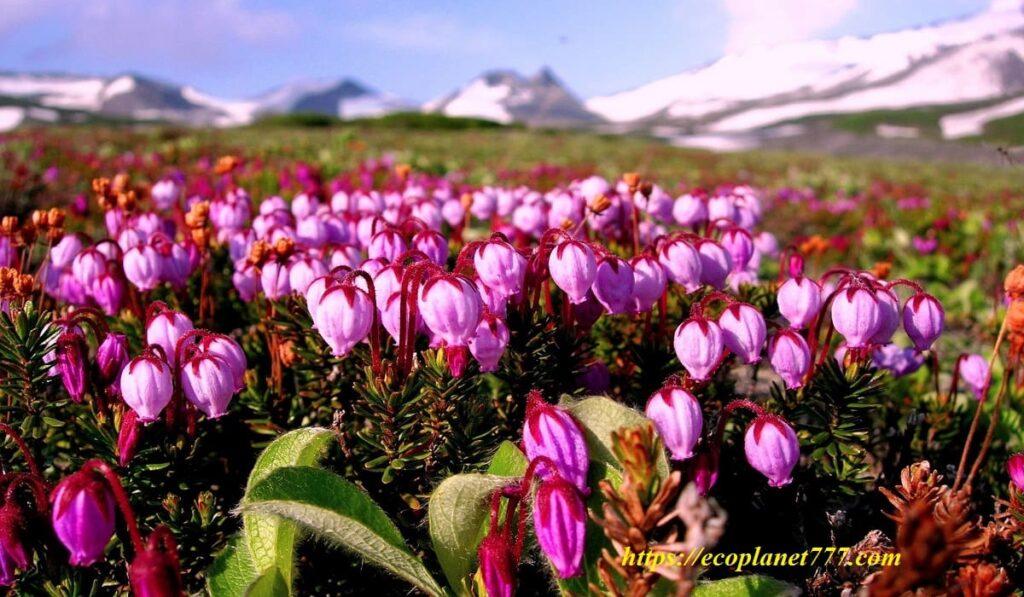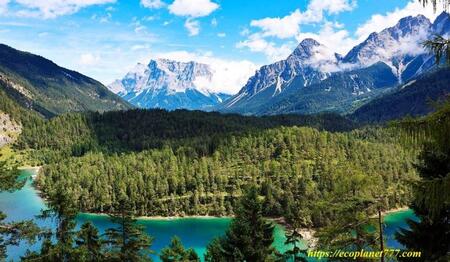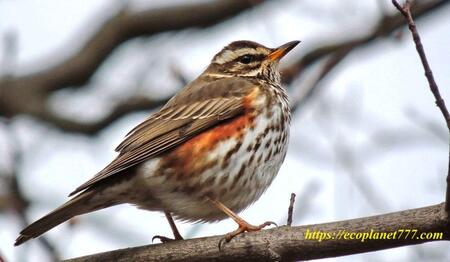The natural zone of the tundra is the habitat of many plants. Under harsh conditions, tundra plants tend to be small and grow very close to the ground. This protects them from the strong winds and low temperatures of the north. They also have shallow roots to prevent damage in permafrost conditions. Many characteristic plants of the natural zone of the tundra have adapted their leaves to better retain water, and their stems to trap heat.
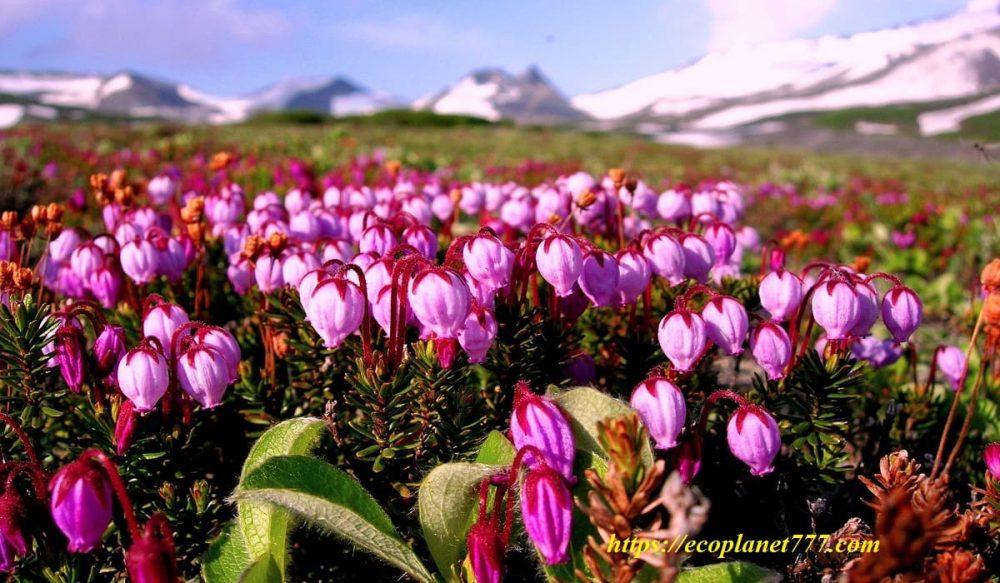
Some flowering plants have evolved the cupped shape of their flowers to provide more sunlight and warmth. Others have adapted to bloom at low temperatures and, even after complete drying, can come to life as soon as the soil becomes wetter.
Despite the fact that only 15 to 25 centimeters of precipitation can fall in the tundra per year, and the average temperature ranges from -4 to 15⁰С, thousands of plant species grow there. The vegetation of the tundra consists of herbaceous plants, mosses, lichens and shrubs growing low to the ground where temperatures are highest.
Characteristic plants of the tundra
Tundra shrubs
Arctic willow (Salix arctica)
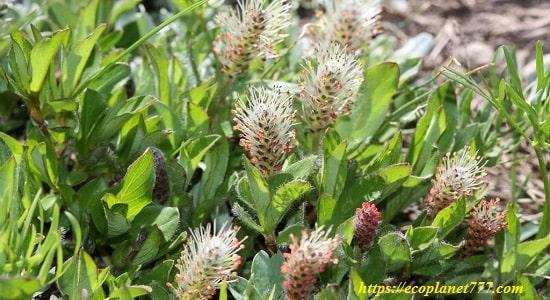
The willow plant is a characteristic shrub of the tundra, it comes in a wide variety of shapes and sizes, usually its height is from 15 to 20 centimeters. It has long creeping branches that have the ability to take root on the surface of the earth.The leaves are oval with sharp ends, the flowers are prickly. The roots are superficial, and the leaves have long downy hairs to protect them from the cold and winds of the tundra. Also, this plant produces a special substance that protects it from harmful insects.
Dwarf willow (Salix herbacea)
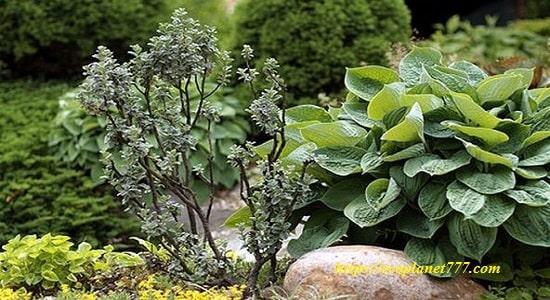
It is a perennial shrub, also known as snow willow, growing up to about 5 centimeters in height. The flowers of the plant are red, pink, yellow and brown. Leaves of a special wide shape, to receive the maximum amount of sunlight and heat. The dwarf willow survives in the characteristic tundra climate due to its tiny size. It grows mainly on well-drained river banks and steep rocky slopes.
Wild rosemary

This multi-branched, low-growing shrub is attractive throughout the year, with grey-green, fragrant foliage, snow-white flowers, and downy seeds. The plant has adapted to life in the tundra due to the special ability of the leaves to prevent water loss.
Mosses and lichens of the tundra
Reindeer moss (Cladonia rangiferina)
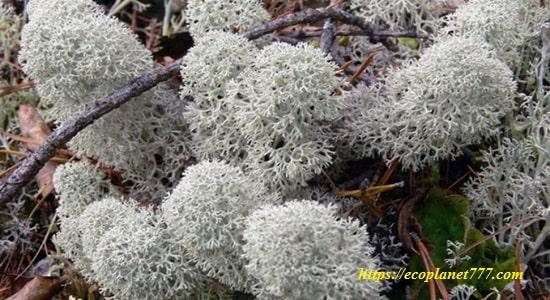
Moss lichen (or northern moss) grows up to 8 cm in height, is often found in the tundra and is a characteristic plant of this region. The color varies from pale green to brown, gray or whitish. The periods of the most rapid growth of the plant are spring and autumn, when high humidity and cool temperatures prevail. Moss occupies vast areas in the ecosystems of the northern tundra and serves as food for reindeer, elk and musk oxen.
Arctic moss (Calliergon giganteum)
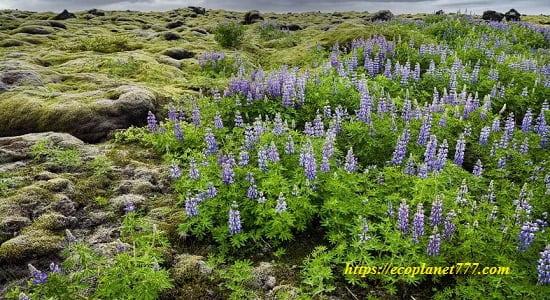
This is a water moss that prefers to grow near swamps and in tundra lakes. The plant has adapted to the harsh climate of the tundra thanks to its tiny roots and ability to accumulate nutrients. Growth activity is very low, only about 1 cm per year. This plant is food for many animals and birds that live in the vast tundra, because. it is rich in nutrients and grows all year round.
Tundra flowers
Arctic poppy (Papaver radicatum)

The arctic poppy is predominantly light yellow in color, making it easily camouflaged in tundra environments. In a plant, the roots consist of shoots that spread in all directions for better water supply.These flowers, as always, are low, which is typical for the tundra.
Tundra rose (Dasiphora fruticosa)

Tundra rose (or cinquefoil shrub) has flowers of different shades: white, yellow, orange and pink. Bright saturated colors attract various pollinating insects. She is hardy and unpretentious, which helps her survive in the worst natural areas of the tundra. Despite drought, erosion and other negative factors, the plant successfully grows and develops in any weather conditions and at different temperatures.
Arctic crocus (Anemone patens)
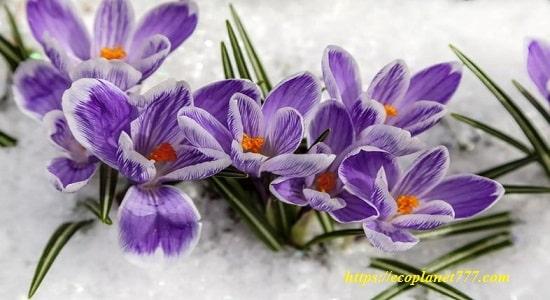
The plant has a combination of purple and white colors, as well as bright orange stamens that attract pollinators. The roots are superficial so as not to reach the eternally frozen layer of the earth, and the downy hairs of the leaves and stems serve to protect against the wind of the tundra. Flowers have adapted to grow side by side, warming each other and protecting themselves from the blizzard.
Purple mountain saxifrage (Saxifraga oppositifolia)

This early flowering tundra plant begins to bloom as early as April. The stems are of characteristic low growth, tightly adjacent to each other, the leaves are oval. The star-shaped flowers are predominantly purple in color. The saxifrage grows mainly on stones or among them.
Tundra grass
Cotton grass (Eriophorum vaginatum)

A common plant in the natural tundra zone is cotton grass, a herbaceous perennial with thin leaves that looks like grass. Stems are about 20 to 70 centimeters tall, with fluffy seeds at the top. They are carried by the wind in different directions. Fluffy fibers serve as protection for the plant from the characteristic cold and winds of the tundra. This herb was used to make a wick for candles or lamps, it was dried and dipped in animal fat.
Heather (Calluna)

Common heather or simply heather is the only species of the genus Calluna of the heather family. It is a low-growing perennial shrub growing up to 20-50 centimeters in height. Flowers appear at the end of summer – they are usually mauve, but sometimes there are plants with white flowers. Heather is an important food source for various tundra animals that seek plant food when snow covers low vegetation. Birds feed on young shoots and seeds of this plant. Heathers form dense stands of grass that retain nutrients and form miniature windbreaks for other plants.
Sedge
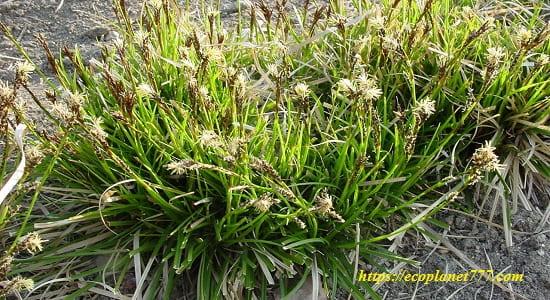
The sedge is like grass, it grows quickly. Due to its ability to absorb certain nutrients, it can live on the tundra for over two hundred years. Due to the constant freezing and thawing of water, the grass creates small hills known as tussocks. The plant has adapted to the cold climate of the tundra and serves as food for many animals.
Tundra berries
Saskatoon Berry (Amelanchier alnifolia)
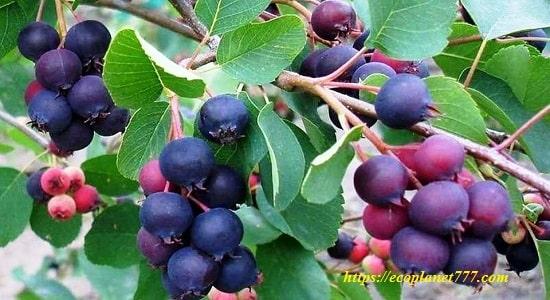
This plant is always beautiful, regardless of the season. So, the first white flowers appear in spring, then nutritious berries ripen in summer, and finally, in autumn, the leaves become brightly colored. In appearance, the plant resembles blueberries, but belongs to the apple family. This plant has adapted to the conditions of the tundra due to the minimum requirement for soil conditions. Just like apples, Saskatoon berries can ripen even after the picking process. Many birds use these berries as a food source, and bees and other pollinating insects flock to the nectar and pollen of this plant in spring.
Crowberry (Empetrum)
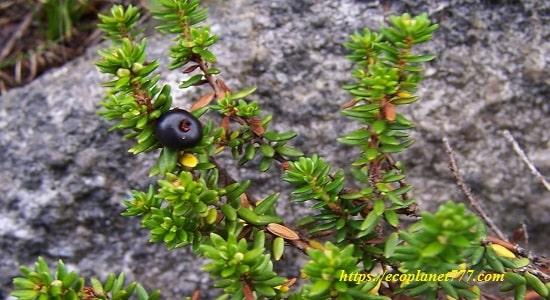
This plant belongs to the species of low evergreen shrubs of the heather family (Ericaceae). It grows about 25 cm in height and weaves a little. Narrow simple leaves are about 1 cm long, the flowers are very small, purplish-pink. The fruits are small berries that range in color from reddish to purple to black, depending on the species. The plant produces juicy, edible fruits with a slightly sour taste, which are an important food source for numerous species of birds, as well as bears, voles and other tundra mammals.
Bearberry (Arctostaphylos uva-ursi)
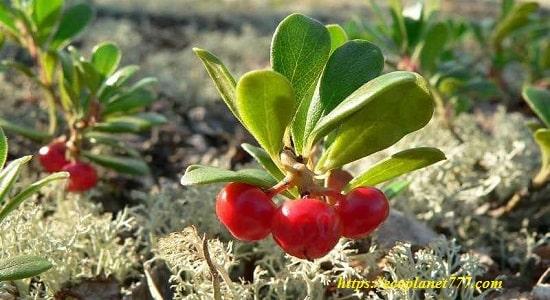
The bearberry plant is about 15 centimeters tall. The leaves are dark green in color, dense structure, the berries are red. Stems covered with fine hairs. The old stem has a smoother surface, and the new one is more fleecy, scarlet in color.In the tundra, the plant prefers to grow on stone and sand, has adapted to extreme conditions, and has learned to survive, despite the dry and harsh climate.
Cloudberry (Rubus chamaemorus)
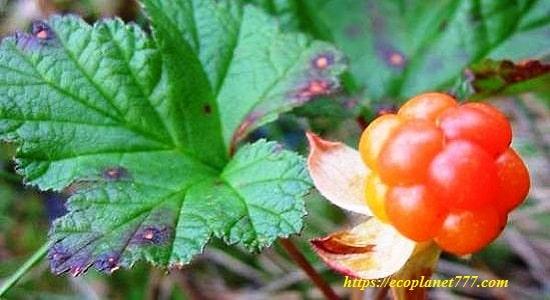
This is a creeping herbaceous plant of the Rosaceae family, growing in the natural zone of the tundra, its edible berries, similar to raspberries. It is a characteristic undersized perennial that spreads easily by means of creeping rhizomatous stems. The serrated leaves are round in shape with rounded lobes. Plants are dioecious, meaning they are either male or female. Female plants produce yellow or amber fruits from a white flower measuring 2.5 cm.
Partridge-pea (Chamaecrista fasciculata)
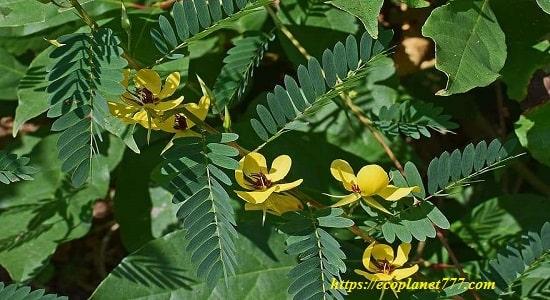
Partridge-pea is a thin-stemmed annual plant about 30 cm high with pinnately compound leaves, with many small yellow-green leaves. Large showy yellow flowers emerge from the leaf axils. The bright flowering plant attracts bees, butterflies and other pollinating insects. Ripe seed pods are eaten by wild birds.
Conclusion
Despite the fact that the natural zone of the tundra is not the most favorable place on earth, tundra plants have developed and developed excellent resistance even to such extreme conditions. They learned to be content with poor soil, adapted to strong winds, and also adapted to permafrost. Tundra plants attract pollinating insects and also serve as food for many birds and wild animals.
P.S.
If you liked and found this information useful, please share it on social media. networks with your friends and acquaintances. This is how you support our project “Ecology of Life” and make your contribution to the preservation of the environment!
- Magnetic storms: the sun is testing the planet🌪️ - 13.06.2024
- Why You Should Drink Chicory: Benefits and Harms 🌿 - 09.06.2024
- Innovative Choice: Sproud Milk – Your Ideal Plant-Based Drink 🌱 - 03.06.2024
